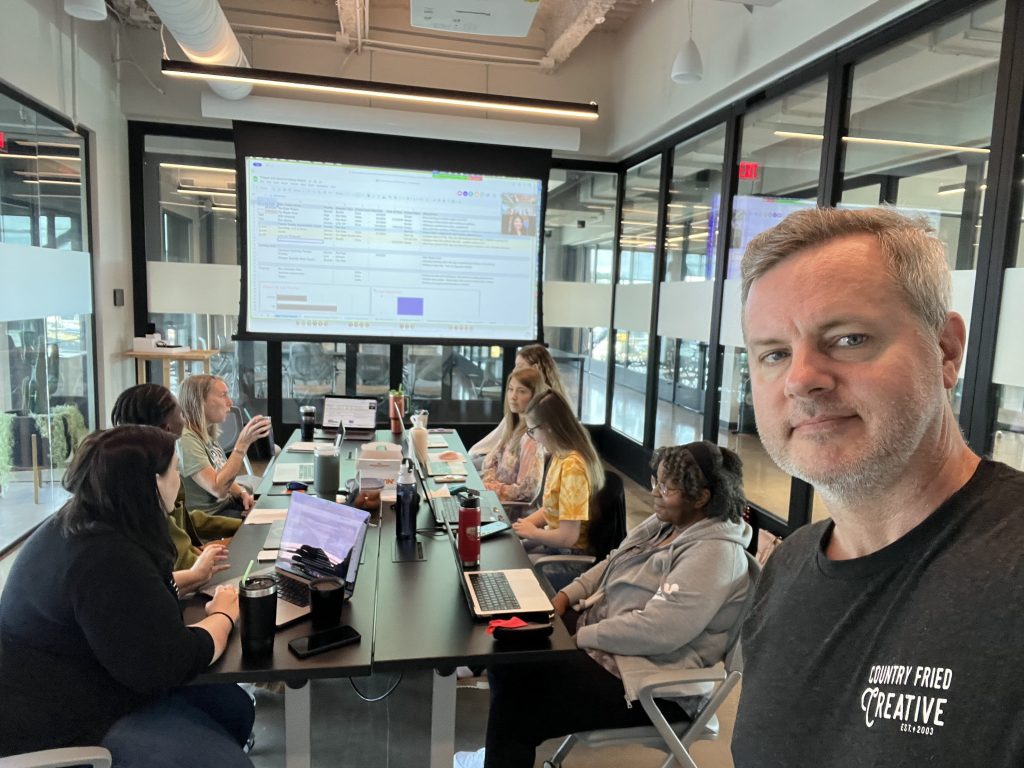The temptation to take shortcuts is ever present in all areas of life. As a society, we’re impatient and want instant gratification and results. We all have our own paths to blaze and to follow in life – some are quick and others are not. Let’s consider a real world example using a map and compass. Last weekend, Mary Catherine and I finished our last orienteering meet of the season. Do you remember my previous article, “Business Lessons from the Sport of Orienteering”?

As a reminder, orienteering is a sport where you try to locate control points outside in the shortest time possible using a map, compass, and terrain. Like most navigational choices, in orienteering we have to make decisions between the shortest distance using a straight line (through the woods) or the fastest travel time (which normally means taking trails). Even if you’re not an orienteer, most of you probably use GPS navigational aids like Google Maps, Waze, or Apple Maps. If so, then you know you can plot your route using “fastest time” or “shortest distance.”
As a professional marketer, I see the shortcut mindset all the time. Businesses often seek quick fixes to boost sales, increase brand visibility, or enhance customer engagement. Not only do businesses seek shortcuts in their operations, so do customers. Many marketing campaigns capitalize on this desire, making unrealistic shortcut offers such as “learn the secrets of the successful,” “instant weight loss,” and “guaranteed immediate results.”
Last week I received a special business award that I’ll write about in a future article. I was both honored and humbled to receive the unexpected recognition. After the presentation luncheon, someone approached me and asked, “You’ve had a great career Joe. Is there a shortcut for success in business?” Interesting question. Let’s explore the topic here and then I’ll share with you what I told the person.
First of all, it’s probably good to start by considering the concept of success. Success means different things to different people. Conceptually success usually implies the accomplishment of some aim or objective. A few weeks ago I wrote about “Dreams vs. Dollars“. You can probably guess where I stand when it comes to success measurements. No matter how you define success, there are obviously going to be different ways to achieve that success. It’s a no-brainer that most people want to achieve success sooner rather than later.
A shortcut is a way of reducing time, effort, or resources to achieve something. On the surface level, those seem like good things. Most shortcuts involve skipping steps or components in the hopes of a faster, less resource-intensive solution or goal. Besides the hope for an optimized pathway, when people are involved there’s a psychological aspect to shortcuts as well. For some reason, humans love secrets, especially when those secrets promise a big reward like a treasure map to a hidden fortune. Human motivations driven by hope, certainty, gratification, social proof, and cognitive biases also feed the interest in having secret shortcuts.
Typical shortcuts in business usually involve one or more of the following:
Process Shortcuts: Simplifying or skipping steps in a process or procedure in the hopes of performing it faster. Quite often an organization does something because “that’s the way it’s always been done.” On the other hand, sometimes institutional knowledge is lost over time and important steps are omitted, causing adverse results.
Technology Shortcuts: Applying technology such as software, automation tools, and artificial intelligence (AI) to perform tasks or generate desired output quicker and cheaper. In general, most people would agree that technology is a good thing even if it temporarily eliminates some jobs, as history has shown new jobs are often created. However, the growth rate of technology has begun to cause some to have concerns about existential risk. We won’t explore that issue here for now.
Component Shortcuts: Using less expensive or more accessible resources to reduce costs and save time. We see examples of this not only in manufacturing but in marketing content when someone chooses to use stock or AI-generated content in place of human-generated content (yes, we can tell when you do that). The output of this approach is often referred to as a Minimum Viable Product (MVP) or Minimum Viable Service (MVS).
Decision Shortcuts: Going for the “quick win” by implementing quick strategies to deliver more immediate results. In sales, we often call this “going for the low hanging fruit.” Templates and checklists are often used to help streamline decision-making. Computers use algorithms and heuristics to do the same thing.
Knowledge Shortcuts: Quickly gaining information or skills through accelerated learning. Back in the day, this might come in the form of a printed encyclopedia or user manual. The advent of Internet search expanded human-centric knowledge acquisition. Nowadays, AI can just tell you what needs to be done without much knowledge actually gained by a human.
Ideally, taking shortcuts can offer a variety of benefits including:
- Time savings from unnecessary steps.
- Cost reduction gained from eliminated resources.
- Increased efficiency from fewer processes.
- Competitive advantage by getting to market quicker.
- Morale boost to team members who are motivated by the quick win.
- Better resource allocation to focus on what matters.
- Greater innovation, a.k.a. “necessity is the mother of invention.”
- Simplification leading to greater understanding by all concerned.
Disadvantages may include:
- Decreased quality from omitting necessary components and parts.
- Compliance issues in bypassing legal and regulatory requirements.
- Long-term costs due to repairs and rework.
- Increased risk from oversights, omissions, and failures.
- Erosion of trust from employees and customers who may perceive expediency as more important than quality (big problem with AI right now).
- Stifled innovation from quick fixes that are more important than long-term improvements. Innovation is both an advantage and disadvantage from shortcuts.
- Incomplete learning from shortcuts can deprive people of proper learning and knowledge acquisition (another big problem with AI-generated solutions that no one understands).

Do I take shortcuts in business? Absolutely, when it makes sense. All effective leaders must find a balance between effectiveness and efficiency. That’s where experience, discernment, and leadership come into play. Knowing when to streamline a process and when to adhere to the traditional route is crucial. Like many things in business and life, it’s all about the balance. Balancing efficiency with quality ensures that shortcuts are strategic and do not compromise the integrity of the business. By making informed decisions, I can leverage shortcuts to enhance productivity and growth without sacrificing long-term success or employee and customer trust.
So let’s revisit the question asked in the title and fourth paragraph above: “Is there a shortcut for success in business?” Based on my experiences, “No, there isn’t an all-encompassing shortcut for success in business.” However, there are opportunities for shortcuts that you’ll encounter along your journey. It’s up to you to decide which ones to take by balancing the advantages and risks. The key is to make smart, informed choices.
Use shortcuts to boost efficiency and eliminate unnecessary steps and waste without sacrificing quality, integrity, or long-term goals. By thoughtfully evaluating each shortcut, you can leverage them to drive success while maintaining trust and delivering value. Over the years, I’ve made some really good decisions as well as some spectacular blunders. It’s all part of the journey. Choose wisely. That’s my opinion, but what do you think? Do you think there’s a shortcut to success in business?
(NOTE: I’m not anti-AI, as you know from my previous columns on the subject (linked here and here). Quite the contrary, I regularly use it for certain tasks. However, the main premise of generative AI is a “faster and better” shortcut mentality, which could be problematic if used in the wrong way.)
[Joe Domaleski, a Fayette County resident for 25+ years, is the owner of Country Fried Creative – an award-winning digital marketing agency located in Peachtree City. His company was the Fayette Chamber’s 2021 Small Business of the Year. Joe is a husband, father of three grown children, and proud Army veteran. He has an MBA from Georgia State University and enjoys sharing his perspectives drawing from thirty years of business leadership experience. Joe is a recipient of the Peachtree City Rotary Club Business Leader of the Year Award for 2024. Sign up for the Country Fried Creative newsletter to get marketing and business articles directly in your inbox. You can connect with Joe directly on LinkedIn for more insights and updates.]









Leave a Comment
You must be logged in to post a comment.